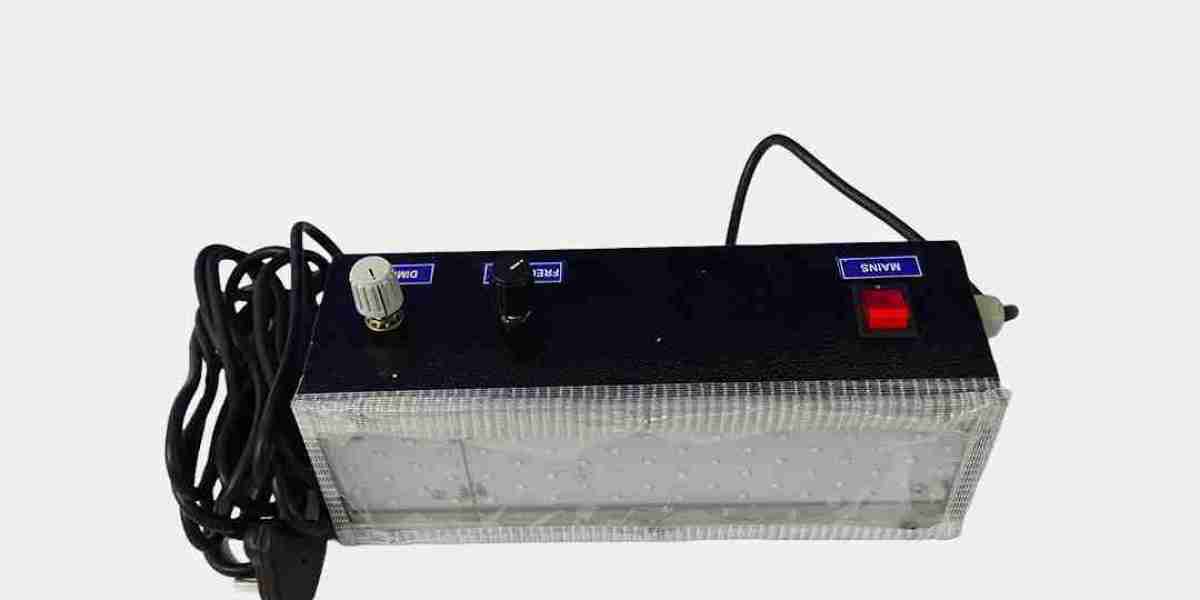The fixed stroboscope is a specialized optical instrument designed for continuous monitoring and precise inspection of fast-moving machinery and components in industrial settings. As part of the broader family of stroboscopes, the fixed stroboscope utilizes the stroboscopic effect to visually freeze or slow down the motion of rotating objects. By emitting short bursts of intense light at specific frequencies, the fixed stroboscope synchronizes with the periodic motion of the observed components, allowing for detailed observation and analysis.
Features and Construction
The fixed stroboscope is engineered with specific features to ensure durability, reliability, and efficiency in industrial applications:
1. Mounting: As the name suggests, the fixed stroboscope is permanently installed in a designated location, typically adjacent to the machinery or equipment it monitors. This stationary placement ensures stability during extended monitoring and inspections.
2. High-Intensity Illumination: Fixed stroboscopes are equipped with powerful light sources, such as xenon flash lamps or high-intensity LEDs, to provide ample illumination for clear and detailed observation.
3. Adjustable Flash Frequency: The flash frequency of the stroboscope is adjustable, typically ranging from a few Hertz (Hz) to thousands of Hz. This adjustability allows operators to match the stroboscope's flashes to the rotational speed of the observed machinery, creating the stroboscopic effect.
4. Control Panel: Fixed stroboscopes often feature an intuitive control panel with buttons or knobs that enable users to set and fine-tune the flash frequency, intensity, and other parameters.
Applications in Industrial Settings
The fixed stroboscope serves a wide range of critical applications in industrial environments:
1. Machinery Maintenance and Troubleshooting: Fixed stroboscopes are valuable tools for maintenance technicians and engineers to inspect rotating components, such as belts, gears, pulleys, and motors. By visually freezing the motion of these parts, the stroboscope enables personnel to identify defects, misalignments, and irregularities that may affect machinery performance.
2. Quality Control and Synchronization: In production and manufacturing processes, fixed stroboscopes are used for quality control and synchronization. By defects proper timing and coordination of components on assembly lines, stroboscopes help maintain product quality, reduce, and optimize production efficiency.
3. Fault Detection and Performance Optimization: Fixed stroboscopes aid in detecting faults and anomalies in machinery performance. By providing real-time visual feedback during operation, operators can make timely adjustments to enhance performance and prevent potential failures.
4. Research and Engineering: In scientific research and engineering fields, fixed stroboscopes are employed to study the behavior of fast-moving objects and systems. They help researchers visualize vibrations, oscillations, and other rapid phenomena, providing valuable insights for analysis and experimentation.
Benefits of Fixed Stroboscope
The fixed stroboscope offers several advantages that make it a valuable asset in industrial settings:
1. Continuous Monitoring: Fixed stroboscopes provide continuous observation and analysis, allowing operators to monitor machinery performance over extended periods.
2. Real-Time Feedback: The real-time visual feedback provided by fixed stroboscopes facilitates quick decision-making and adjustments during operation.
3. Precision and Accuracy: The stroboscopic effect enables precise inspection of rotating components, resulting in accurate fault detection and alignment tasks.
4. Longevity and Reliability: Designed for stationary installation, fixed stroboscopes are built with durable materials, reliable performance in demanding industrial environments.
Conclusion
The fixed stroboscope is a powerful and indispensable tool in industrial settings, where continuous monitoring, precision inspection, and fault detection are crucial for optimal machinery performance. Its ability to enhance apparently freeze or slow down the motion of rotating components through the stroboscopic effect empowers maintenance teams and engineers to defects, optimize performance, and production efficiency. With its robust construction and adjustable flash frequency, the fixed stroboscope illuminates the world of high-speed motion, supporting industries in their pursuit of operational excellence and quality control.









